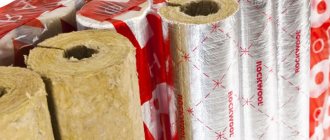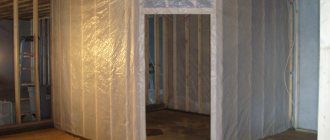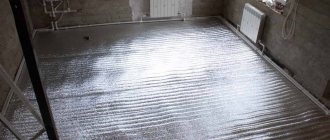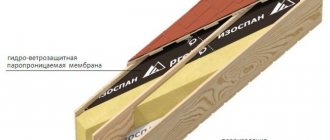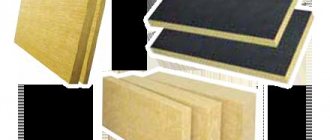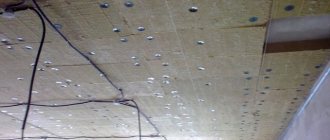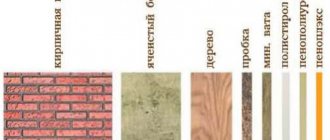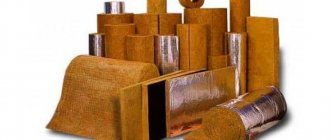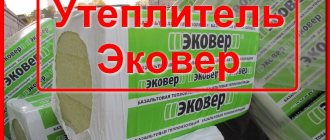- February 10, 2020
- Construction
- Irina Fendak
Insulation coated with a thin layer of aluminum foil has found widespread use in construction. Applying the film by thermal welding ensures a reliable connection of the layers and strengthens the material.
Foil insulation is used in the construction of houses, garages, baths, in mechanical engineering and the aviation industry. It is used for the manufacture of certain types of specialized containers, insulation of pipelines, and ventilation ducts.
Performance characteristics of insulation with foil
Traditional thermal insulation materials after applying a layer of foil acquire additional quality indicators. Existing ones are also improved. Such materials:
- more resistant to temperature changes;
- moisture resistant on the foil side;
- have increased sound insulation;
- save heating costs due to reflective properties;
- fireproof;
- do not emit toxic substances;
- easy to install;
- have little weight.
Among the disadvantages, one can note the impossibility of using them directly under finishing mixtures due to the softness of the material. Some types require the use of additional adhesive or special fasteners during installation. Thin insulation cannot provide good thermal insulation in areas with very cold climates; in some cases it is necessary to lay a second layer of uncoated material.
Which side to lay the underlay under the laminate: how to lay it correctly
Currently, laminate is one of the most common floor coverings. This popularity is due to its large set of positive qualities, including ease of installation, durability and pleasant aesthetic appearance. The range of laminate flooring today is so wide that many people “lose their heads” from such variety. Because of such complexity of choice, people sometimes forget about such an important element as the substrate. It is this that allows you to increase the service life of the floor covering and provides reliable sound and heat insulation. Let's consider what is the priority of foil backing for laminate over others.
Kinds
Insulation with foil is divided according to the form of release and the number of layers of coating. Depending on the area of application, the heat insulator is produced in the form of:
- rolls;
- sheets and plates;
- hemispheres with fastenings or cylinders.
Aluminum is applied on one or both sides. Also, one-sided material on the opposite side can be covered with a layer of adhesive and film. Before installation, the film is removed, the insulation is easily glued to the surface without the use of additional fasteners.
Construction insulation with foil is also divided according to the type of base layer.
Foil-coated stone wool
Foil-coated stone wool is produced in rolls and sheets. Its thickness can reach 10 cm.
The advantage of this material is its natural composition. The technological production process is based on the action of a volcano: crushed stone and blast furnace slag are melted under the influence of very high temperatures, then, entering a centrifuge, under the influence of air flows they turn into thin threads. Binders are added to them, molding, firing, and foiling are carried out.
Stone wool is environmentally friendly, durable, and fireproof. Light weight and flexibility allow it to be used for surfaces of any shape.
Fiberglass wool
The industry produces fiberglass insulation materials, for example, Izover insulation with foil. Its production is similar to the process of producing stone wool. Basalt rocks and remains of the glass industry are used here. When purchasing, you should pay attention to the direction of the fibers. The best option is a material with a chaotic arrangement.
Good performance characteristics allow this type of wool to be used for various purposes: internal and external thermal insulation of walls, insulation of floors, roofs. Due to its heat resistance, it is widely used in the construction of baths.
The disadvantage is the moisture permeability of the material, so insulation from steam and water is necessary.
Foamed polyethylene
This material is obtained by introducing a gas mixture into its structure. The result is a durable, elastic heat insulator with a cellular structure. Foil coating is done on both one and two sides.
Polyethylene is often used as an insulating underlay for floors, as it adheres tightly to surfaces and can easily restore its original shape. The material has good sound insulation; when using it, you can do without vapor barrier, because it is moisture-proof. This heat insulator does not rot and is not attractive to rodents. Not everyone knows which side to lay insulation with foil on. But if done correctly, it will reflect heat waves towards the room.
For external insulation, foamed polyethylene is used in combination with other materials.
Expanded polystyrene
This insulation is an improved type of foam. Improved performance is achieved through extrusion. Foiled polystyrene foam is available in the form of sectional rolls or slabs.
This heat insulator is used mainly for insulating floors. It can be used in combination with a “warm floor” system. For convenience, most types of this insulation have markings for installation of coolants.
Foiled polystyrene foam can also be used to insulate the roof.
Basic functions of the substrate
The laminate is laid on a pre-prepared, flat and dry base, on a layer of substrate spread under the laminate.
The quality of installation and the duration of use of the laminated coating largely depend on professional installation and correctly selected and laid underlay material. The importance of the lining under the laminate can hardly be overestimated; its choice and the quality of the material largely determines how long and faithfully the laminated coating will serve you, whether it will be cozy and comfortable for you in your apartment in the winter.
In some types of laminated panels, the backing layer is attached to the reverse side, most often these are coatings with strength class 33. Basically, the underlay is laid separately, before laying the laminate. It performs several necessary functions at once:
Today there are many varieties of substrate materials, both natural and synthetic.
The most common substrate materials:
Internal wall insulation
Thermal insulation of walls from the inside with foil material is similar to the installation of conventional insulation. There are some features that need to be taken into account. The main question that arises when using a two-layer material is: which side should the insulation with foil be laid on the walls? Experienced builders answer unequivocally: the metallized side should face the inside of the room. If you do the opposite, the properties of the insulation will be reduced to a minimum.
Another important point: an air gap of approximately 1.5 cm must be left between the finishing and the heat insulator.
Insulation of room walls is carried out in five stages:
- The surface is thoroughly cleaned of old finishes and accumulated dirt, then impregnated with an antiseptic.
- Further actions depend on the shape of the insulation. If rolls with an adhesive layer are used, they are simply glued to the wall. Rolls without glue are attached using a stapler and special fasteners. You can apply an adhesive composition to the material and glue it. For the slabs, you need to make a sheathing and attach the insulator to its cells, not forgetting which side the insulation with foil is laid on.
- If necessary, the material is additionally secured using a stapler or dowels.
- Seams and cracks are sealed with aluminum construction tape.
- Wooden slats are stuffed to form an air gap.
Builders note that roll modifications, when used for walls, are much more convenient to install.
When insulating a room from the inside, you need to take into account some rules:
- the insulating material is laid close to each other, avoiding gaps between the rows;
- to prevent the appearance of cold bridges, the seams are taped with aluminum tape;
- the rolled material is not overlapped;
- for insulation with double-sided coating, it is necessary to provide an air gap on both sides;
- It is recommended to additionally fix the self-adhesive material around the perimeter.
Internal insulation is a difficult process, which has its drawbacks. Firstly, the area of the room is reduced. Secondly, while the work is being carried out, residents must be evicted and things must be removed. Thirdly, this method is more expensive. However, with the right choice of material and careful attention to the work process, this task is quite feasible.
Which side to lay
You can lay the foil backing yourself. The process is distinguished by its simplicity and speed. It consists of two stages - preparation and installation itself.
Preparation
Before laying laminate boards, you need to thoroughly prepare the floor surface. The durability of the floor covering will depend on the quality of the preparatory work.
Preparation includes following these steps:
The video shows the preparation of a substrate for laminate with foil:
As for the shortcomings, there is only one. This is a high price, because of which not everyone can buy such a high-quality lining for laminate flooring.
Installation
The foil product must be laid in the direction in which the laminate will be installed. Lay the lining so that the reflector is located on top. Leave an allowance on the strip that is centered along the wall. It will be several centimeters.
All strips are installed end-to-end and secured using foil tape. It must be glued extremely carefully so that there are no creases in the edges of the material or cracks.
In order not to destroy the integrity of the floor covering with shoes, the process of laying the underlay should occur in stages.
The material is laid in a volume that will be sufficient to lay 2-3 rows of laminate boards. After this, install the floor covering and lay the next strip of lining. After installing the laminate boards, mask the allowances that are located near the wall under the baseboards.
Here's a video on how to lay a backing with foil:
In order for the installation process to be completed as accurately and efficiently as possible, you must adhere to the following recommendations:
You may also be interested in learning about what color of laminate to choose for your apartment.
But how to choose a high-quality laminate for an apartment and what criteria you should pay attention to is described in great detail in this article.
It will also be interesting to learn about which class of moisture-resistant laminate is the best and which one should be used
But this article will help you understand what are the pros and cons of a coniferous substrate for laminate and what you should pay attention to.
For those who want to learn more about how to lay underlay under laminate, you should watch the video in this article.
Insulation of walls outside
Experts disagree on which method of thermal insulation is more effective. Many people believe that external insulation is better. The dew point moves outward, which prevents premature destruction of the walls. This is especially true for wooden structures. With the external method, no additional ventilation is required; the walls “breathe”, creating a favorable microclimate. External insulation does not affect the area of the rooms in any way.
Most often, for thermal insulation of walls from the outside, building insulation with foil in the form of layers of mineral wool is used. The following work is being carried out:
- Cleaning the walls and applying antiseptic impregnation.
- Laying vapor barrier.
- Installation of wooden or metal sheathing. Preference is given to a metal structure because it eliminates deformation of the final finish due to changes in temperature and humidity.
- Fastening the insulation using adhesive, additional fixation with dowels.
- Fastening the windproof film.
The finishing is installed taking into account the required gap.
Work on external insulation of building walls is carried out at positive air temperatures and in the absence of rain.
Floor insulation
Floor insulation is carried out in buildings with both wooden and concrete floors. Technology for laying material for wooden floors:
- Surface cleaning.
- Coating with impregnation and primer.
- End-to-end laying of thermal insulation.
- Sealing seams with tape.
- Installation of sheathing for air gap.
- Flooring with plywood or boards.
In areas with a harsh climate, the insulating “pie” is made multi-layered: double-sided insulation, sheathing with ordinary material, one-sided insulation, gap bars, flooring. At the same time, we must not forget which side to lay the insulation with foil - the metallized layer inside the room.
Application area
Foil-coated thermal insulation products are often used for heating equipment (heaters, oil radiators, boilers).
In addition, wall surfaces and floor bases are covered with such insulation with foil towards the room. The reflective layer retains maximum heat in the room and does not let it out.
Since the product is small in thickness, it is often used to insulate small areas. It is used for thermal insulation of saunas, garage cooperatives, outbuildings, pipeline communications, wells and boreholes.
Penofol for floor insulation.
Ceiling
Work on thermal insulation of the ceiling does not take much time, but the effect is noticeable. Everyone knows that warm air moves upward. In the absence of an insulator, it heats the ceiling and gradually goes into the attic. Foil material turned out to be especially effective for the ceiling. You now know which side to lay the insulation with foil, so you will do everything correctly. In this case, the ceiling will reflect heat waves towards the room, preventing them from passing outside.
For houses with a wooden floor, which is the ceiling for the first floor and the floor for the attic, everything is done simply. It is enough to lay a roll of thermal insulation under the subfloor of the attic. Which side should I lay insulation with foil on? Answer: metal film down.
When insulating concrete ceilings you need:
- Clean the surface.
- Apply antifungal agent and primer.
- Glue the insulation with foil to the ceiling and seal the seams.
- Additionally secure with special dowels.
- Make a wooden sheathing.
- Screw the drywall.
- Seal the cracks with sickle tape.
If necessary, you can use foil insulation in combination with regular insulation. The material without foil is attached to the ceiling, and roll insulation with foil is laid on it.
Insulating a house or apartment with two-layer insulation makes staying there more comfortable and significantly saves heating costs. You just need to carefully consider the selection of material according to technical characteristics and purpose and avoid mistakes during the installation process.
Required materials and tools
There are several types of foil materials in the retail chain. Their installation requires different materials and tools. Therefore, we provide a complete list of the required set of tools, specifying when and where they will be needed.
Materials you will need:
- foil insulation;
- wooden beam 50x50 mm for lathing;
- spacer bar (20x50 mm) for installing a counter-lattice;
- plasterboard or OSB for covering the frame;
- primer;
- adhesive for insulation - individually for a specific type of substrate (“CERESIT CT 190” for basalt wool, “CERESIT CT 85” for foam plastic);
- metal corners, self-tapping dowels for the wall and wood screws - fasteners for assembling the sheathing.
The tools you should have on hand are:
- homemade sawhorses or stepladder (you can use a strong table);
- a hammer drill or electric drill - will be required when attaching the sheathing trim to the wall;
- screwdriver;
- mixer attachment for stirring glue;
- glue container;
- wood hacksaw;
- construction knife with replaceable blades;
- putty knife;
- level;
- roulette.

